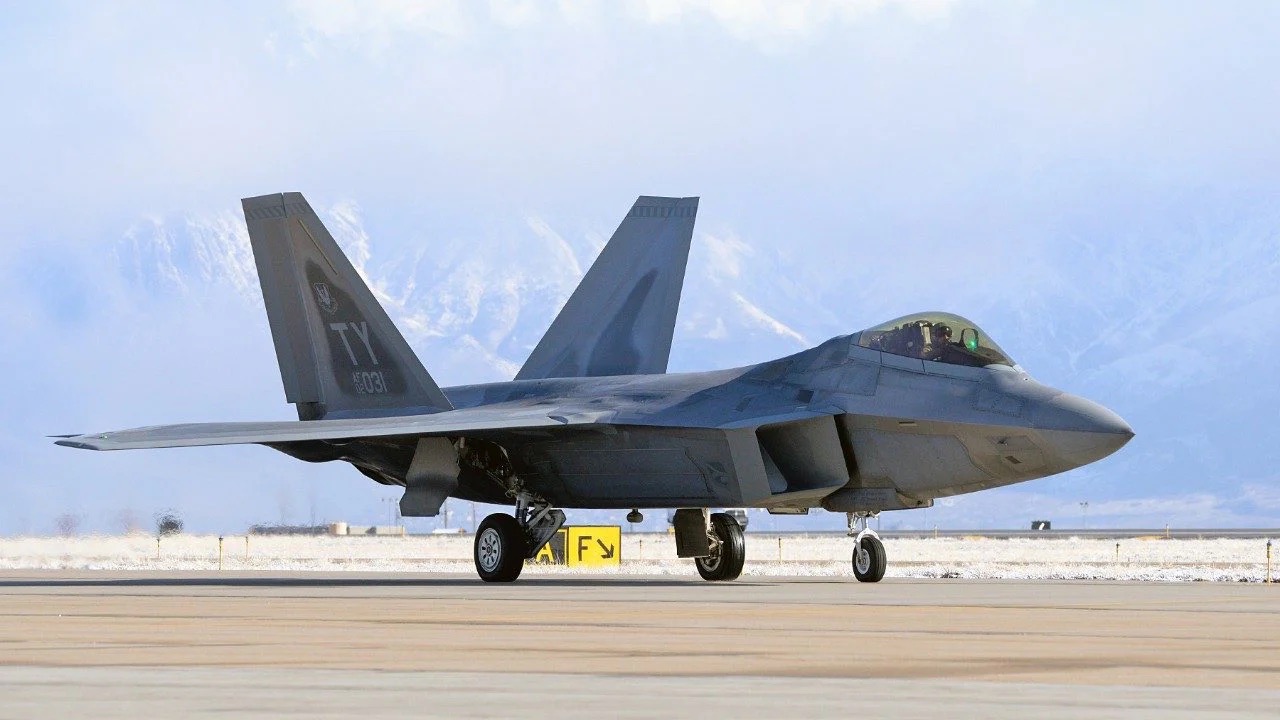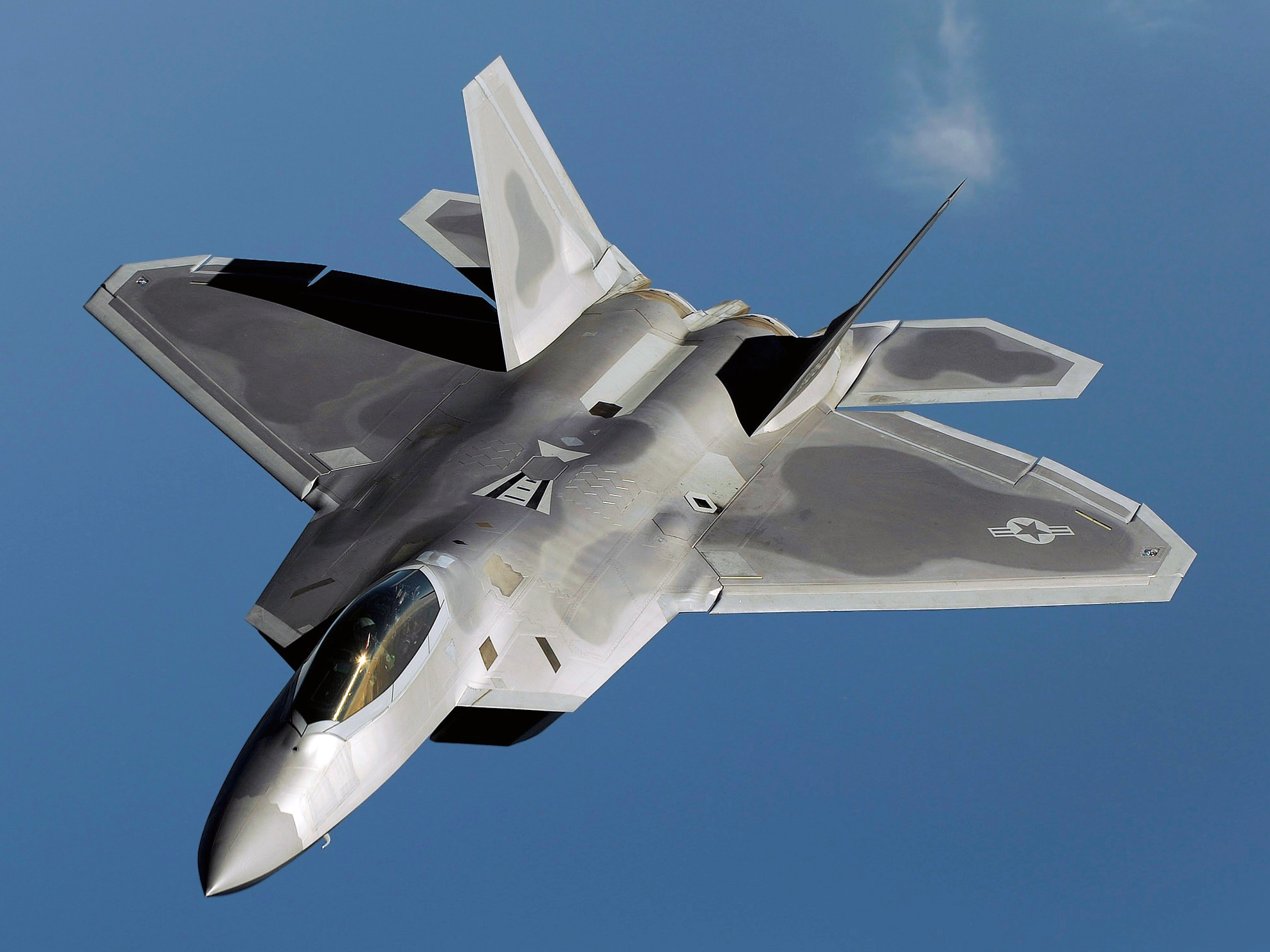If fighter jets had a “Most Likely to Dominate the Skies” yearbook category, the F-22 Raptor would win every time—and then burn the book in a Mach 1.8 flyby, just because it can. While the rest of the world scrambles to develop their sixth-generation fighters, the Raptor remains the undisputed champion of air superiority. Sure, the competition is promising flashy new features, but let’s be real: the F-22 is still the boss, and it knows it. Here’s why this badass bird is the nightmare fuel of enemy pilots (and maybe even a few engineers).

Thrust That Could Launch a Small Moon
The F-22’s engines are so powerful they practically demand their own zip code. Each Pratt & Whitney F119 engine churns out 35,000 pounds of thrust, for a combined 70,000 pounds of raw, unfiltered “sit down and shut up” energy. That’s enough to send this beauty cruising at Mach 1.8 without even bothering with afterburners. Supercruise isn’t just a buzzword; it’s the Raptor’s way of saying, “Why waste fuel when I can outrun you efficiently?”
Meanwhile, the rest of the world’s so-called “next-gen” fighters are still fumbling with engines that overheat or need afterburners just to keep up. China’s J-20? More like “J-trying.” Russia’s Su-57? Cute, but it’s been stuck in production limbo longer than your average DMV line. The F-22 doesn’t just win; it’s already lapped the competition before they hit the runway.
Oh, and let’s not forget the legendary SR-71 Blackbird. Its Mach 3.3 top speed is impressive, sure, but let’s be honest: it’s a drag racer in a world that demands street fighters. The Blackbird was built to run away, not to stand its ground. The Raptor? It’s not running anywhere. It’s here to fight.
Agility That’ll Give You Whiplash
Raw speed and power are great, but agility is what wins dogfights—and the F-22 is more flexible than a gymnast on Red Bull. Thanks to its thrust-vectoring nozzles, this jet can out-turn, out-climb, and out-dodge just about anything in the sky. The Raptor doesn’t just dance around missiles; it practically moonwalks out of danger zones while flipping the bird (pun intended).
In simulated combat, the F-22 has embarrassed competitors like the Eurofighter Typhoon and even the F-35, which is supposed to be its younger, cooler sibling. Imagine bringing your A-game to a basketball court only for Michael Jordan to show up and dunk on you. That’s what it feels like going up against the Raptor.
Meanwhile, the sixth-gen crowd promises “enhanced agility,” but until we see their prototypes do barrel rolls at 40,000 feet, we’ll keep our bets on the jet that’s already proven it can twist and turn its way to victory.
Stealth: The Art of Being a Ghost
Let’s talk stealth. The F-22’s radar cross-section is the size of a marble. Not a beach ball, not a bowling ball—a marble. Good luck spotting that. While your fancy radar systems are busy scanning for flying buses, the Raptor is already behind you, locking on, and deciding whether it’s worth the missile.
Sixth-gen fighters claim they’re taking stealth to the next level with concepts like active camouflage and holographic projections. Cool. Call us when your holograms can survive 9G turns. The Raptor doesn’t need gimmicks; it’s already perfected the art of disappearing when it needs to and striking when it counts. It’s like a ghost, but with more firepower.
Technology That’s Been There, Done That
The F-22’s technology was groundbreaking when it first rolled out, and it hasn’t stopped evolving. Its sensor fusion capabilities mean pilots don’t just see the battlefield—they own it. Data from multiple sources is integrated into one seamless picture, making it nearly impossible to catch a Raptor pilot off guard.
Sure, sixth-gen prototypes are throwing around terms like “AI copilots” and “hypersonic weapons,” but let’s not forget: experimental tech has a way of breaking at the worst possible moment. The F-22’s systems are already combat-tested and pilot-approved. It doesn’t need to promise the future; it’s busy dominating the present.
Comparing Legends: The Raptor and the Blackbird
The SR-71 Blackbird will always hold a special place in aviation history. It’s the ultimate spy, the Cold War’s speed demon, and a marvel of engineering. But let’s not pretend it’s in the same league as the F-22. The Blackbird’s job was to run away, fast. The Raptor’s job is to ensure nothing else can fly away at all.
Think of the Blackbird as the kid who’s great at track but useless in dodgeball. The Raptor? It’s the all-star athlete who excels in every sport—and makes it look easy.
Sixth-Gen Fighters: Big Promises, Little Payoff (So Far)
The sixth-generation fighter arms race is heating up, but most of the players are still in the concept phase. China, Russia, and Europe are hyping up jets with buzzwords like “laser weapons” and “AI-assisted decision-making.” Sounds exciting, right? Except these planes don’t exist yet—or at least not in a form that can do more than take cool photos at airshows.
Even when they do arrive, they’ll face the uphill battle of matching the Raptor’s decades of experience. The F-22 isn’t just a machine; it’s a weapon system with a proven track record of superiority. Promises are great, but results are what win wars—and the Raptor has plenty of those.
Why the F-22 Raptor Rules the Skies

The F-22 is more than just a fighter jet. It’s a symbol of what happens when engineering brilliance meets military precision. While other nations play catch-up, the Raptor continues to own the skies, combining power, agility, stealth, and technology in a way no other aircraft can.
It’s not flashy, it’s not trendy, and it doesn’t care about being the latest and greatest. It’s here to do a job—and it does it better than anyone else. Whether it’s outmaneuvering rivals, sneaking past radar, or simply asserting dominance, the F-22 remains the gold standard of air superiority.
Final Thoughts
The F-22 Raptor doesn’t just live up to the hype—it obliterates it. While sixth-generation fighters talk a big game, the Raptor is already out there, proving every day why it’s the best. Call it old-school if you want, but until something actually beats it in the real world, the Raptor will keep flying high and kicking ass.
So here’s a thought for those designing the next-gen fighters: stop overthinking it. Build something that can actually compete. Until then, the Raptor will keep dominating—and it won’t even break a sweat doing it.

